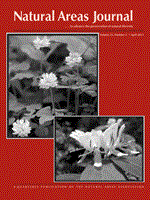We studied responses of breeding birds to alternative regimes for managing tallgrass prairie at the Smoky Hill Air National Guard Range in central Kansas. Species richness, diversity, and evenness did not differ among treatments, but overall abundance was highest in unburned idle (i.e., not grazed or hayed) transects, and was lowest in idle transects burned that spring. However, no treatment was either superior or inferior to all others for attracting the highest numbers of every species. Dickcissels (Spiza americana) and Henlow's sparrows (Ammodramus henslowii) were most numerous in unburned idle units, grasshopper sparrows (A. savannarum) were most abundant in grazed units and hayed units, upland sandpipers (Bartramia longicauda) were most often found in burned units, whereas eastern meadowlarks (Sturnella magna) were less abundant in burned units than in all other treatments. We conclude that the recent switch to burning idle units every 3–4 years, rather than annually, has benefitted most grassland bird species. The variety of management regimes implemented at Smoky Hill Air National Guard Range fosters heterogeneity of vegetative structure across the landscape, and thereby allows the site to provide for differing needs of various species, thus enhancing its value for grassland bird conservation.
How to translate text using browser tools
1 April 2013
Effects of Grassland Management on Breeding Birds at the Western Edge of the Tallgrass Prairie Ecosystem in Kansas
Alexis F.L.A. Powell,
William H. Busby

Natural Areas Journal
Vol. 33 • No. 2
April 2013
Vol. 33 • No. 2
April 2013
grassland birds
grazing
haying
prescribed burning
rangeland
tallgrass prairie




